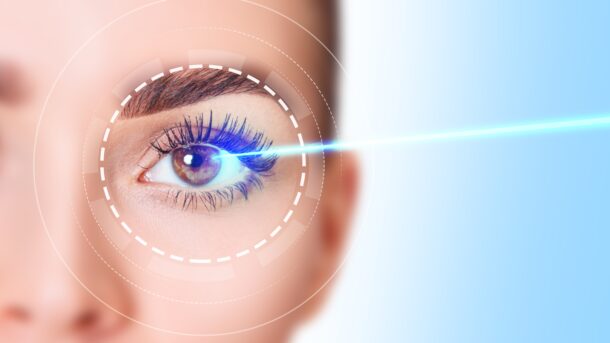Did you know that half of all eyesight issues and vision loss can be prevented? Early diagnosis and treatment are crucial, as is maintaining a healthy lifestyle. What does that mean exactly? Here are some of the simple choices you can make every day to protect your eyes.
1. Eat Well for Better Eye Health
Good eye health starts with the food on your plate. Nutrients such as omega-3 fatty acids, lutein, zinc, and vitamins C and E can help ward off age-related vision issues like macular degeneration (which makes it hard for you to see things right in front of you) and cataracts (cloudy spots on the lens of your eye).
To get enough of these nutrients, try to eat:
Zinc-rich foods such as chickpeas, oysters, and yogurt
Green leafy vegetables such as spinach, kale, romaine lettuce, and collards
Broccoli and Brussels sprouts
Salmon, tuna, sardines, and other oily fish
Colorful veggies such as sweet potatoes, carrots, and red peppers
Eggs, nuts, beans, and other nonmeat protein sources
Oranges, nectarines, grapefruit, kiwi and other citrus fruits
2. Exercise to Keep Your Eyes Healthy
Unless your doctor advises otherwise, try to exercise 150 minutes each week. You don’t have to do it all at once. You may find it works best with your schedule to get moving 30 minutes at a time, five days each week. Any activity that gets your body moving counts, whether it’s a cardio class, a brisk walk with a friend, or raking leaves in your yard.
How does exercise benefit your eyes?
Working out increases the amount of blood and nutrients that flow throughout your body, including to your eyes. Studies show that long-term exercise can boost tissue healing. It can also reduce oxidative stress, an imbalance in your body when you have more toxins than antioxidants to fight them off.
Being active can also help you maintain a healthy weight. That’s good for your eyes, too. Research shows that extra pounds can lead to inflammation throughout your body. That can result in eye issues such as cataracts, macular degeneration, and glaucoma, which damages your optic nerve and prevents your eyes from properly sending information to your brain.
Obesity also raises your risk for type 2 diabetes, the leading cause of blindness in adults. Over time, high blood sugar can cause serious damage to the small blood vessels in your eyes.
If you find it hard to get moving 150 minutes each week, do what you can. Any amount of physical activity is better than nothing.
3. Quit Smoking to Protect Your Vision
Tobacco use increases your risk for cataracts, optic nerve damage, macular degeneration, and many other health issues. If you’ve tried to kick the habit before only to start again, you already know that quitting tobacco can be tricky.
That’s because nicotine, the main chemical in tobacco, changes how your brain works. It fools you into thinking that you need more nicotine to feel okay. Once you quit using tobacco, it can take a few weeks before this craving goes away. During that time, you could have symptoms such as feeling irritated, finding it hard to focus, and trouble sleeping.
Smoking or vaping may also have become a big part of your daily routine. To quit for good, it can help to replace it with other healthy habits. For instance, when a craving hits, you may instead choose to text a friend, listen to music, or go for a short walk.
Don’t give up if your first attempt to quit tobacco doesn’t work. That’s really common. Think about asking your doctor for help. Studies show that even getting a few quick tips from them raises your chances of swearing off smoking for good.
4. Wear Sunglasses to Safeguard Eye Health
The right pair of shades will help protect your eyes from the sun’s ultraviolet (UV) rays. Too much in your eyes can increase your chances of cataracts and macular degeneration. Even on cloudy days, your eyes aren’t necessarily safer, as UV rays can still pass through the haze.
When shopping for sunglasses, choose a pair that can do at least one of the following:
- Block 100% of UV rays
- Block both UV-A and UV-B rays
- Offer UV400 protection
Wraparound lenses help protect your eyes from the side. Polarized (anti-glare) lenses don’t have anything to do with blocking UV exposure. But they can cut down on how much glare is reflected into your eyes from surfaces such as water, snow, and sidewalks.
If you wear contact lenses, some types offer built-in UV protection. But it’s still a good idea to wear sunglasses for an extra layer.
5. Use Safety Eyewear
Every day, about 2,000 people injure their eyes while at work. That’s more likely to happen if you work around harmful substances that can get into your eyes or if you risk being struck in the eye accidentally, such as in:
- Construction
- Plumbing
- Woodworking
- Mining
- Car repair
- Farming
- Landscaping
- Health care
Wearing safety glasses or protective goggles is important. The lenses are made from tough materials that can protect your eyes and are unlikely to shatter.
Sports such as ice hockey, racquetball, and lacrosse can also lead to eye injury. To keep your eyes healthy, always wear a helmet with a protective face mask or sports goggles that can shield your eyes.
If you already wear glasses, talk to your doctor about getting prescription lenses in your sports goggles.
Takeaways
Don’t wait until you have a problem with your vision to take care of your eyes. Simple things such as eating healthy foods, trying to get regular exercise, and going for eye exams can all help protect your eye health. Many eye issues have a better outlook when they’re found and treated early.



